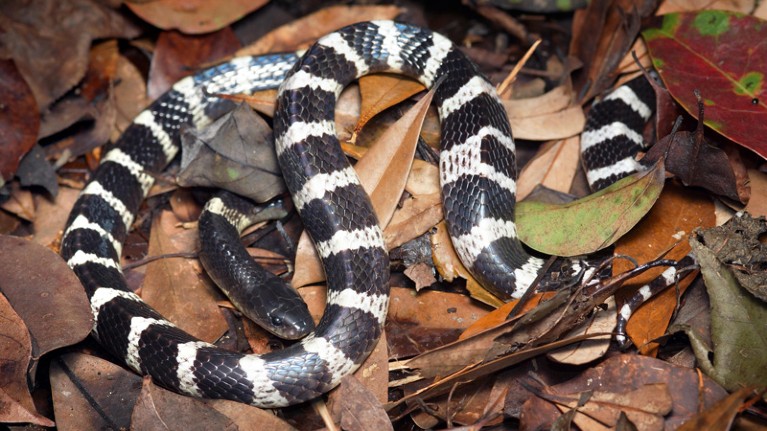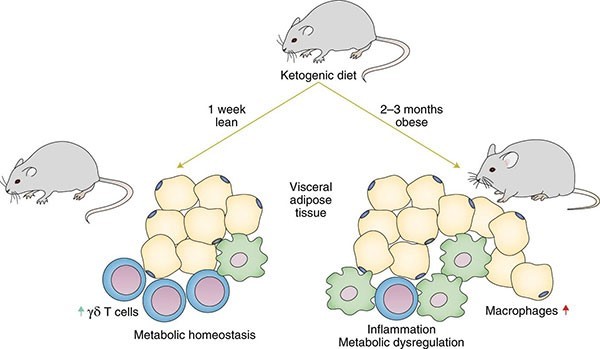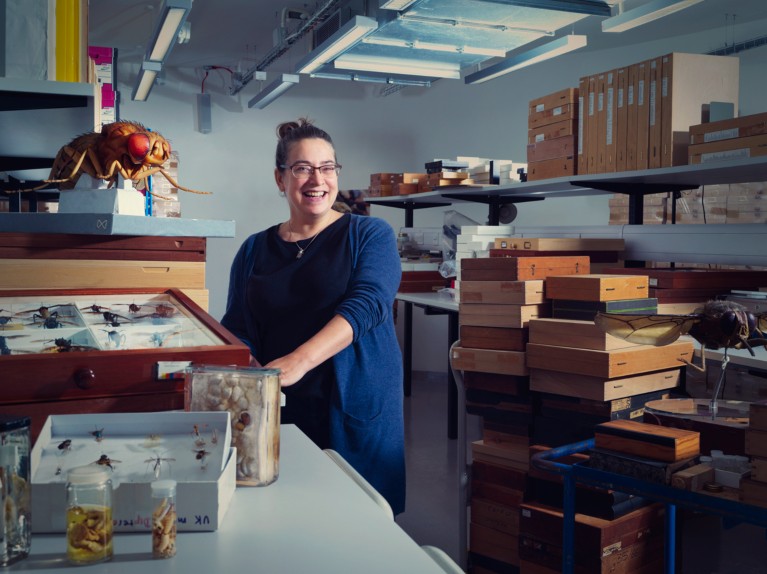Hello Nature readers, would you like to get this Briefing in your inbox free every day? Sign up here

A team of researchers pointed to the many-banded krait snake as one possible source of the coronavirus that originated in Asia.Credit: Alamy
Snakes probably aren’t source of China virus
Researchers seeking the intermediate host for a new respiratory virus in Wuhan, China, have cast doubt on the suggestion that it might be a snake. Chinese scientists published a genetic analysis this week suggesting that Bungarus multicinctus (the many-banded krait) or Naja atra (the Chinese cobra) passed the virus to humans from its unknown animal reservoir. Other scientists say it’s unlikely that 2019-nCoV, as the virus is known, has infected any secondary animal host for long enough to leave a clue in its genome, and there’s no consistent evidence of coronaviruses in hosts other than mammals and birds.
Along with its origins, scientists are racing to answer questions such as how deadly 2019-nCoV is, how it spreads and possible treatments. Learn more about five urgent questions facing researchers.
The World Health Organization (WHO) has decided against declaring the outbreak a global health emergency. “At this time there is no evidence of human-to-human transmission outside China," said WHO director-general Tedros Adhanom Ghebreyesus. "That doesn't mean it won't happen.”
Nature | 4 min read (snakes) & Nature | 5 min read (five question) & Nature | 6 min read (continuously updated with news about the Wuhan respiratory illness)
First genomes from ancient West African humans
Researchers have sequenced the genomes of four children who lived several thousand years ago in what is now Cameroon. The genomes are the first to be collected from any ancient human in West Africa, and underscore the yawning gap in scientists’ understanding of African population history, relative to that of Eurasia, the Americas and even Oceania. The study might help to uncover the origins of a widespread migration that carried languages and agriculture across Africa, the most diverse place on Earth.
Lured out of hiding, HIV is vulnerable to a cure
Two treatments in animals offer the most robust and reproducible evidence so far that they can draw out the last vestiges of HIV that survive antiretroviral therapy. This is the essential first half of the ‘shock and kill’ strategy for curing an HIV infection: once the sleeper HIV are shocked into activity, they can be utterly wiped out. Infectious-disease physician Mathias Lichterfeld outlines how two teams of researchers were able to reactivate HIV hiding in immune cells in rhesus macaques and ‘humanized’ mice, making the virus vulnerable to elimination by other cells of the immune system.
Infographic of the week

Putting mice on a high-fat, low-carb ketogenic diet for one week changed the mix of immune cells in one kind of fat, reducing the chronic inflammation that is characteristic of obesity and improving biomarkers of metabolic health. But mice who overate on a long-term keto diet reversed its good effects. (Nature Metabolism, 6 min read)Reference: Nature Metabolism paper
Features & opinion
Climate change and Australian fires
Researchers have started an ‘attribution study’ to determine the extent to which global warming is to blame for the record bushfires that have ravaged Australia. Evidence has been growing for decades that climate change exacerbates Australia’s fire seasons and nine of Australia’s ten hottest years on record have occurred in the past 15 years. But researchers are seeking to quantify the role of climate change in particular extreme events, so they can better forecast the chances that such catastrophes will strike again.
Podcast: How stress turns hair grey
In mice, acute stress can turn hair grey by depleting the stem cells in the hair follicle that give the strands their colour. The sympathetic nervous system — the flight or flight response — is to blame, rather than the immune system or stress hormones. Stem cell biologist Ya-Chieh Hsu tells Nature Podcast about the first firm scientific evidence for stress-induced greying.
Nature Podcast | 26 min listen
Read expert analysis in the Nature News & Views article.
Subscribe to the Nature Podcast on iTunes, Google Podcasts or Spotify.
Where I work

Erica McAlister is a senior curator at the Natural History Museum in London, UK, and author of The Secret Life of Flies (Firefly Books, 2017).Credit: Leonora Saunders for Nature
Erica McAlister has a soft spot for the creature that many of us would be happy to swat away: flies. “Not only are they amazingly diverse, but they’re cute,” says McAlister, a senior curator at the Natural History Museum in London, UK, and author of The Secret Life of Flies. She says the museum's 34-million-specimen collection “make[s] me feel how small I am, as part of our biosphere”.
